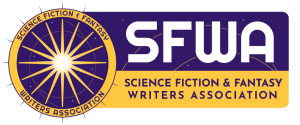by Jendia Gammon
 Worldbuilding takes many forms in genre fiction. Whether a story takes place on another planet, in a mystical land, or in a hellscape of horror, adding touches of realism enhances the world for its inhabitants. Using ecology is one way to achieve that realism.
Worldbuilding takes many forms in genre fiction. Whether a story takes place on another planet, in a mystical land, or in a hellscape of horror, adding touches of realism enhances the world for its inhabitants. Using ecology is one way to achieve that realism.
What Is Ecology?
Ecology is the science that studies the interaction between living organisms and their environment.
Why Apply Ecology to Genre Fiction?
Ecology enriches the worlds you create. By applying principles of ecology to genre (or any) fiction, you can make your world(s) more believable, anchoring even the most fantastical settings with realism.
Other benefits of using ecology in worldbuilding include providing new ways of raising the stakes for your characters. For example, characters faced with hostile environments must deal with their surroundings in addition to other threats.
Interactions with the environment also allow for richer character development beyond our day-to-day chats about weather. Entire societies evolve around unique attributes in their environments.
Interactions
Interactions between living organisms and their environments include abiotic and biotic factors. Abiotic factors are nonliving factors, such as the sun, wind, precipitation, slope, or substrate (whether rock or other substance). Biotic factors are those that are living, such as plants, fungi, protists, or animals. Think about how both living and nonliving elements in your world affect your characters.
Other considerations include predator–prey relationships in your worlds. An apex predator is a top predator in a food chain. If your world has creatures, assume that there are predator–prey interactions. Where does each creature in your world fit in a food chain? What happens when you take the top predator away? What sorts of population pressures do your characters face? Showcasing these factors in your fiction weaves a unique tapestry for your characters to inhabit.
Ecology in Science Fiction
Science fiction is a broad genre allowing for many environmental scenarios. Using ecology can give the unique worlds of science fiction more depth for characters to interact with, for good or ill.
Within cityscapes, for example, heat islands, shade, and wind effects between structures can adversely affect a character’s situation. For exoplanets, exomoons, or asteroids, the habitable zone represents the region in which liquid water can exist, and therefore, it makes possible the existence of life as we know it.
Extremophiles are organisms that exist in extreme environments on Earth. For example, some volcanic vent microorganisms can exist where temperatures are extremely high. Astrobiologists speculate that similar organisms could exist in wildly exotic locations within habitable zones. There is speculation that some forms of life in the universe might even be methane-based.
For solarpunk and other climate fiction, the sun’s effects represent an obvious aspect of an abiotic factor in the environment. Interaction with the sun, using its power, avoiding its pain, etc., becomes paramount.
Subterranean environments reverse this narrative. Consider factors in subterranean environments that could affect characters: temperature, slope, light availability, and the presence or absence of photosynthesis versus other energy mechanisms. Beneath Earth’s oceans, for example, some organisms live so deep that sunlight gives no energy source, forcing them to rely upon chemical reactions for energy creation.
Ecology in Fantasy
It is hard to imagine The Lord of the Rings without the arduous task the hobbits, and their companions faced crossing Middle Earth on their way to Mordor. Snowy mountains, tumbling rivers, and volcanoes provided a rich, abiotic aspect to the ecology of Middle Earth that helped Tolkien imbue his tale with timeless realism.
Mountain chains, oceans, islands, cityscapes, and more affect your fantasy characters in many ways. Avalanches, slippery caves, and improbably tall trees, for example, are different environments that greatly affect the paths of the characters. The use of magic comes in handy to deal with both abiotic and biotic factors in some fantasy fiction.
Your fantasy characters must eat, grow crops, find shelter, and otherwise provide for their basic needs within your created world. What biotic and abiotic factors affect them? Does a special herb necessary for medicine only exist on the leeward side of particular stones? Is the dragon only able to consume prey that exists in one specific valley? Is your dragon the apex predator in the food chain, or is something else the apex predator?
Ecology in Horror Fiction
Speaking of predators, this is a good time to discuss the ecology of horror fiction. Many horror plots involve predator–prey relationships.
Think also about your environment in the horror story. What are the abiotic factors at work? Night, and therefore lack of sunlight? Moonlight’s presence? Cool mist curling over gravestones? Set the scene with your abiotic factors.
The biotic factors arise from living creatures—or perhaps undead ones! (For our purposes, the idea of “living” can be expanded to include the undead as well, since they originated from living organisms.) Either way, your characters presumably must deal with living things in the book. Some of these may be less obvious than others. Have you accounted for all the ways your creatures, characters, and other living things will affect one another in your story world?
Consider also how your characters can survive in this horrorscape you’ve made, be it an intimate space or a vast realm. Can they breathe? What are their vulnerabilities?
Seeking Professional Sources
If you have questions about plausibility or want to flesh out possibilities for species and their interactions, many scientists would be thrilled to share their expertise. This helps in multiple ways: it makes your worlds more believable, and it sets the stage for a powerful narrative in which you have not guessed, you have researched and done your due diligence for the story.
Final Thoughts
Writing in genre fiction involves worldbuilding to provide a rich backdrop for characters, and using ecology in worldbuilding can help make that backdrop seem more realistic, enriching your stories.
Write on!
Explore more articles from WORLDBUILDING
 Jendia Gammon is a Nebula and BSFA Awards finalist author of fantasy, science fiction, horror, and thriller novels and short stories. She is also CEO of Roaring Spring Productions, LLC and Editor-in-Chief of its publishing imprint, Stars and Sabers Publishing. She has also written under the pen name J. Dianne Dotson. Born in Southern Appalachia, Jendia now lives in Los Angeles with her family. Jendia conducts workshops and participates in panels on creative writing for conventions such as San Diego Comic-Con and Star Wars Celebration. She holds a degree in Ecology and Evolutionary Biology. Jendia is also a science writer and an award-winning artist. Learn more about Jendia at jendiagammon.com.
Jendia Gammon is a Nebula and BSFA Awards finalist author of fantasy, science fiction, horror, and thriller novels and short stories. She is also CEO of Roaring Spring Productions, LLC and Editor-in-Chief of its publishing imprint, Stars and Sabers Publishing. She has also written under the pen name J. Dianne Dotson. Born in Southern Appalachia, Jendia now lives in Los Angeles with her family. Jendia conducts workshops and participates in panels on creative writing for conventions such as San Diego Comic-Con and Star Wars Celebration. She holds a degree in Ecology and Evolutionary Biology. Jendia is also a science writer and an award-winning artist. Learn more about Jendia at jendiagammon.com.
.
